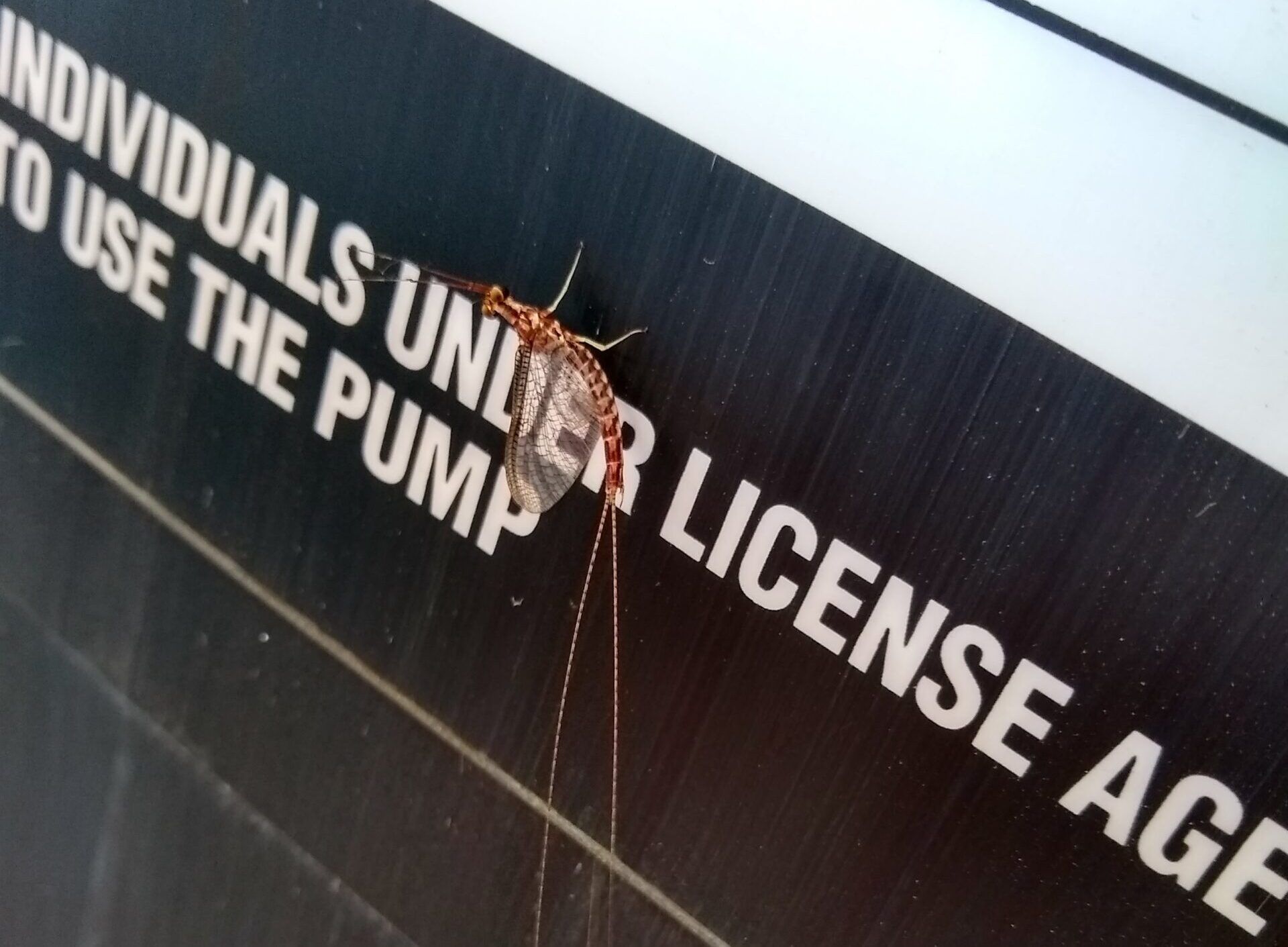
Summertime calls for good vibes, much-needed time in the sun and a creature many aren’t fans of — fishflies.
These insects are no stranger to the Great Lakes region. Fishflies, also known as mayflies, spend most of their lives in the water and are only seen on land once they enter their adult stage. Their appearance signifies a natural part of the early summer season.
“They are an insect that spends most of their life as a juvenile in the water,” said Dr. Jo Latimore, outreach specialist in the Department of Fisheries and Wildlife at Michigan State University. “So we don’t really notice them when they’re there … (and) they’re a really popular diet item for our fish.”
Not only are fishflies significant to the fish in the Great Lakes region, they are an important part of the food chain in general. These insects feed off of algae and other energy sources in the water, which is then passed on to large fish and to the birds feeding off of them. They’re also helpful to fishermen who use them as bait.
Even though fishflies may not be the prettiest insects, they represent good. Dr. David Lowenstein, consumer horticulture extension educator for Michigan State University Extension, said a large number of fishflies near the Great Lakes area means the water is healthy.
“When fishflies emerge out of the water, it’s a good thing,” Lowenstein said. “They are only found in cleaner bodies of water that are doing quite well. There’s been some fishfly emerging for quite some time in Michigan.”
Water quality plays a huge factor in these species’ habitat and lifestyle, as well as the environment as a whole. If fishflies fail to sprout for two or more seasons in a row, it would be a major concern. Lowenstein said some potential factors contributing to unhealthy water is runoff from agriculture and fertilizer dumped on lawns. Those fertilizing nutrients get washed away directly into waterways, leading to unwanted attractions in the water.
“Those can cloudy up the waters and lead to algae blooms that hang out near those nutrients,” Lowenstein said. “Those algae blooms reduce the oxygen level of the water and that creates an environment that’s not as good for fish flies.”
Before the Great Lakes were protected by the Clean Water Act in 1972, Lake Erie’s water quality was detrimentally low. Hatches of fishflies were reduced, which Latimore said signaled the lake was struggling. Thanks to legislation and efforts to clean up the rivers that flow in and out of Lake Erie, we’re seeing the return of fishflies in high volumes.
“(Michigan is) surrounded by the highest number of Great Lakes compared to other states … Ohio gets a fair amount as well,” Lowenstein said. “They had very high counts in Toledo earlier this season, just a week or two ago. There’s about 126 species in Michigan.”
There is no need to panic if you live by the water and spot these insects, they are harmless and only have one goal after emerging from the water — to find a mate and lay eggs and they do so by traveling in large herds. Latimore said the period for seeing fishflies is very brief, but there are ways to guide them away from your area. You can turn off lights that might attract them, or wait for a bird to swoop in and eat them.
“Between birds and a good sweep with your broom, you can clean things up pretty easily,” Latimore said. “I think that’s a small price to pay for healthy water and healthy fisheries and it’s kind of an incredible phenomenon.”
Catch more news at Great Lakes Now:
Harmful algal blooms appearing on Lake Erie earlier than usual
Herring gull eggs help monitor Great Lakes ecosystems
Featured image: Fishfly on a gas pump. (Photo courtesy of Dr. David Lowenstein)




